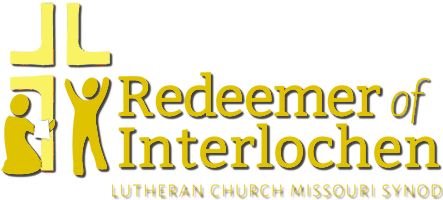

Part of the Book of Concord
The Augsburg Confession is one of the Lutheran Confessions contained in the Book of Concord of 1580. This collection of confessional statements has been adopted by Lutherans worldwide as a true and faithful exposition of the Holy Scriptures, and includes the following:
All members of the LCMS—congregations, pastors, teachers, and other rostered church workers—subscribe to and acknowledge the Book of Concord “to be a correct interpretation of the Holy Scriptures,” and that “according to this form of doctrine all doctrinal controversies shall be decided and adjudicated.” Thus, the Lutheran Confessions declare before all the world what we believe, teach, and confess to be the true and universal teachings of the Christian Church.
The Augsburg Confession
The Augsburg confession is the chief confession of the Lutheran Church. With the Apology, its longer explanation, it is the first special Lutheran confession written and adopted as a testimony against the abuses that had crept into the teaching and practice of the church before the Reformation, and against the errors of the radical reformers such as Zwingli (and later Calvin) and the Anabaptists. The Augsburg Confession was presented to Emperor Charles V of the Holy Roman Empire on Saturday, June 25, 1530, in Augsburg, Germany.
Here the emperor had convened a “diet,” or general assembly, of representatives of church and state to consider the Lutheran movement. In the Bishop’s Palace, where Charles V was lodged, the Confession was read in German by Chancellor Dr. Christian Beyer. This fearless Lutheran layman read the Augsburg Confession so distinctly and loudly that also those who were gathered in the spacious courtyard of the palace could understand every word.
It was a large and august body which here heard a clear summary of what the Lutherans believed and confessed as the truth of God’s Word. There were present all the electors, princes, bishops, representatives of the free cities, and foreign ambassadors connected with the empire. After the reading of the Augsburg Confession, the document was handed to the emperor in both a German and a Latin version.
Why the Augsburg Confession Was Written
For a long time prior to 1530, Charles V had been urged by the pope of Rome to suppress the Lutheran doctrine by force. But he was hindered in the persecution of the Lutherans by the Turks, who at that time threatened the Christian world, as well as by the French king, Francis I, and the doublecrossing politics of the pope himself. All this happened, of course, by God’s gracious ruling for the protection of the precious Gospel truths published as a result of the Lutheran Reformation. The Augsburg Confession was written by Philip Melanchthon, Luther’s famous fellow professor at Wittenberg. But it was based on articles of faith drawn up by Lutheran theologians, especially by Luther himself.
What the Augsburg Confession Teaches
The Augsburg Confession consists of 28 articles, of which some are short, while others are long. Of these, Articles 1–21 present the Lutheran doctrine. Articles 22–28 deal with the medieval abuses which the Lutherans had corrected. The Augsburg Confession considered only the most important matters that were in dispute at that time.
Its tone is friendly and conciliatory because at that time some Lutherans still believed that those who opposed the Reformation might be won for the truth of the Gospel, if only they would hear it clearly stated. The Augsburg Confession stresses the doctrine of salvation by grace through faith in Jesus Christ as the center of the Christian Faith. It gathers around this basic teaching of the Bible all other doctrines of the Christian Faith. In this respect, the Augsburg Confession is unique among Christian Confessions. It witnesses everywhere the glorious Christ, who died for us and rose again and who alone is the Savior of all men.
The Augsburg Confession, Pattern of Other Church Confessions
Because the Augsburg Confession is so excellent a presentation of the Gospel of Jesus Christ and its joyous message of free and full salvation for all men, its influence on Protestantism has been tremendous. The Augsburg Confession is still the outstanding Evangelical Confession, and it is regarded by all Lutherans as a creed that is truly biblical.
Adapted from “The Lutheran Confessions” by J.T. Mueller, Tract #10-193 from Concordia Tract Society, available from Concordia Publishing House. Copyright © Concordia Publishing House. All rights reserved. Used by permission